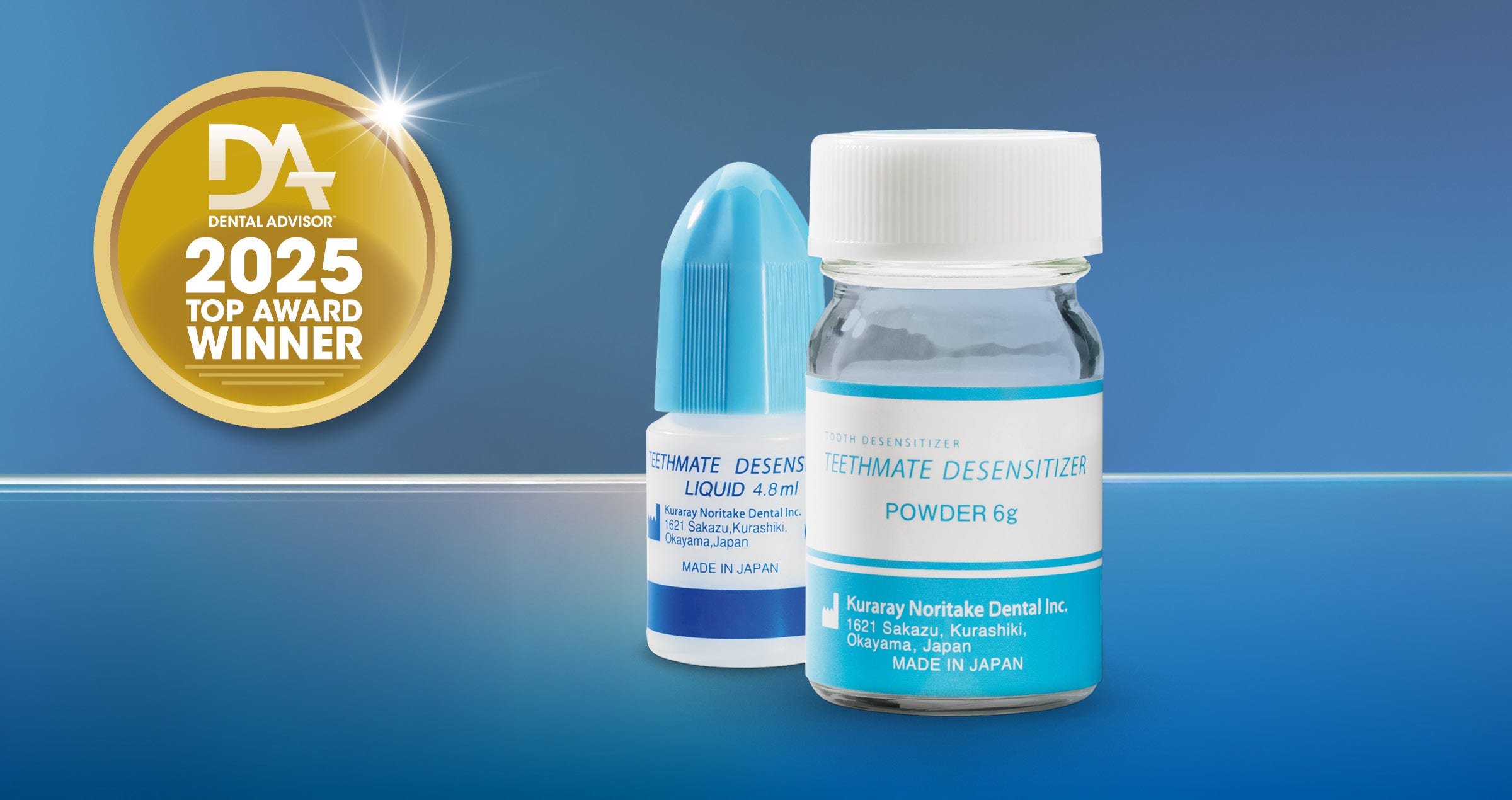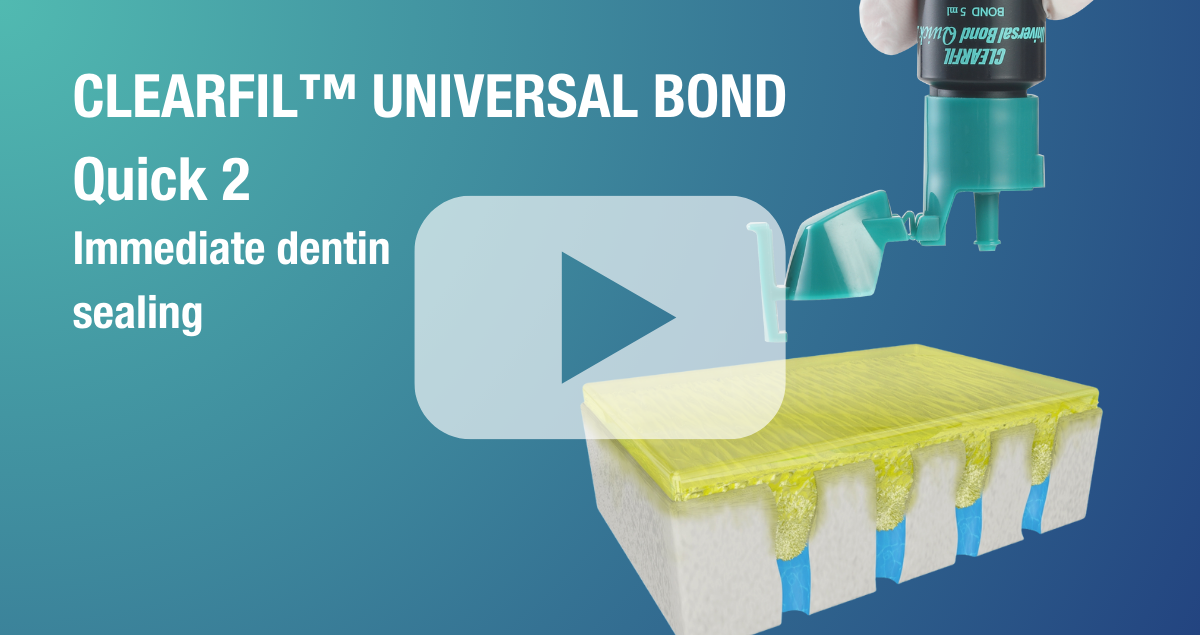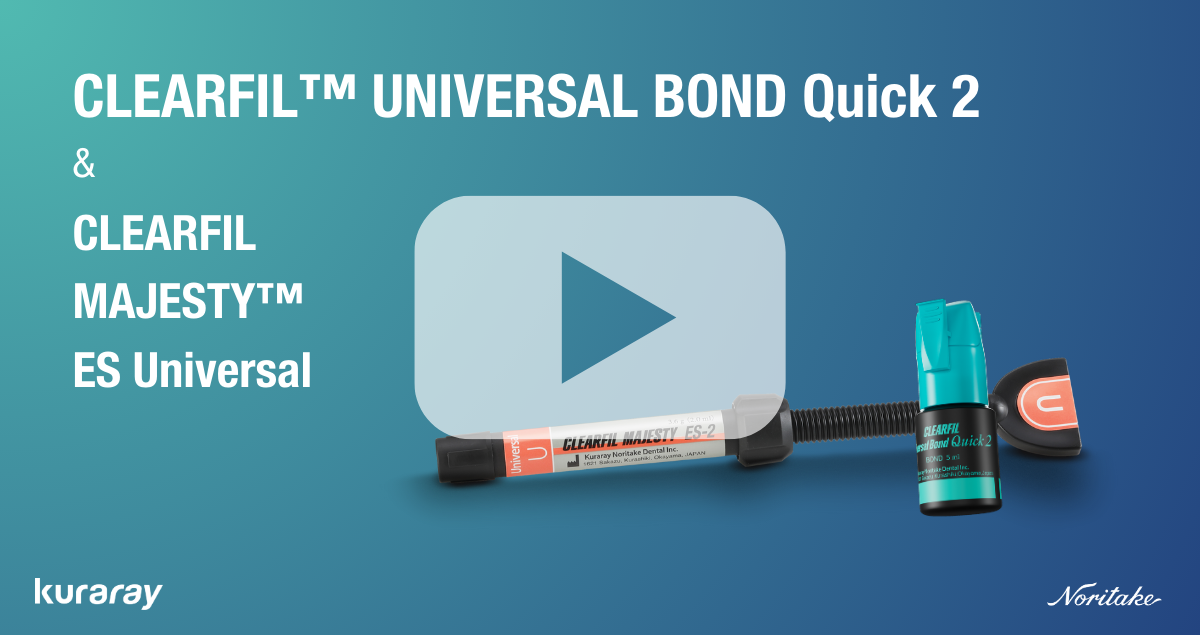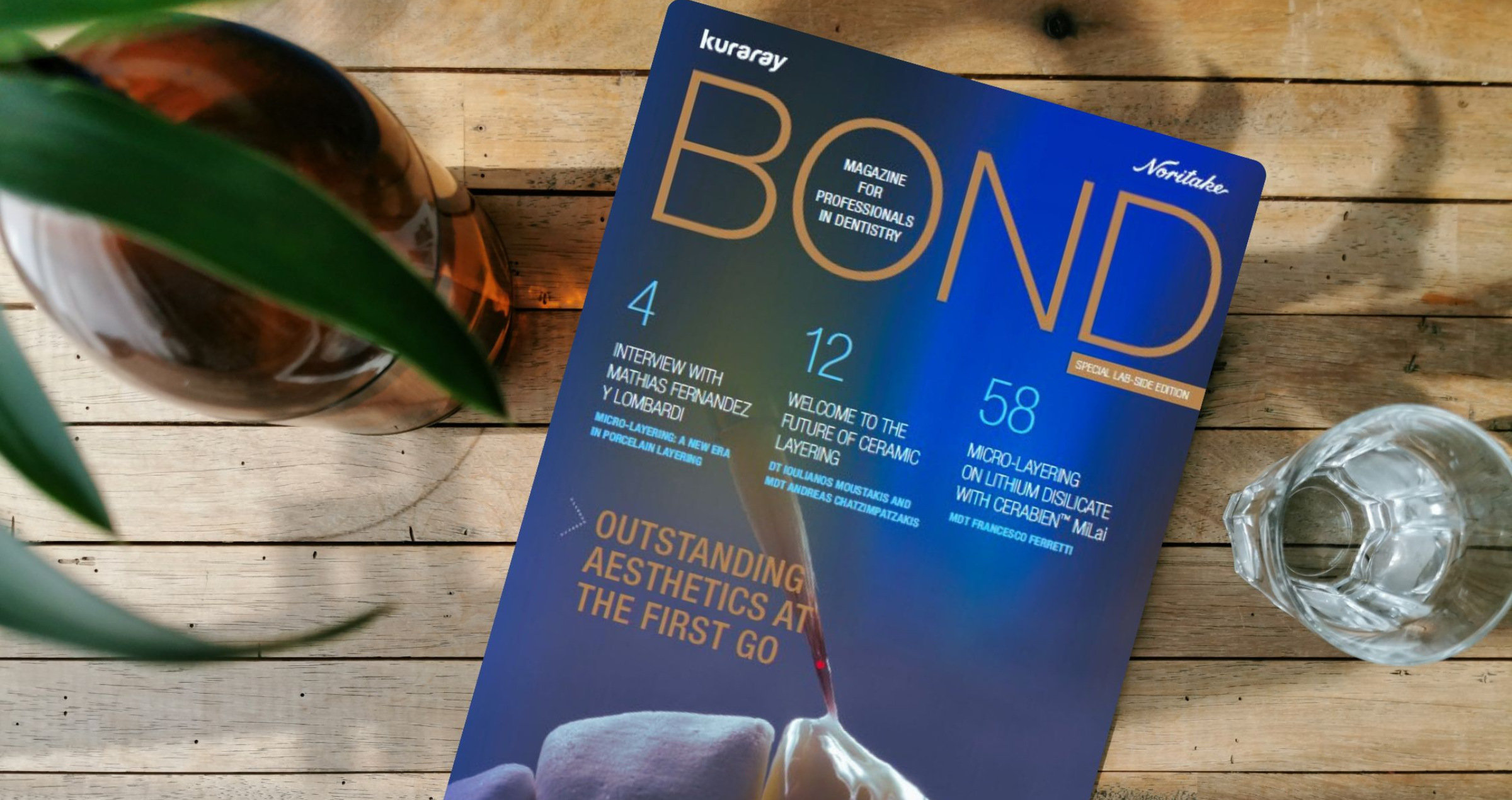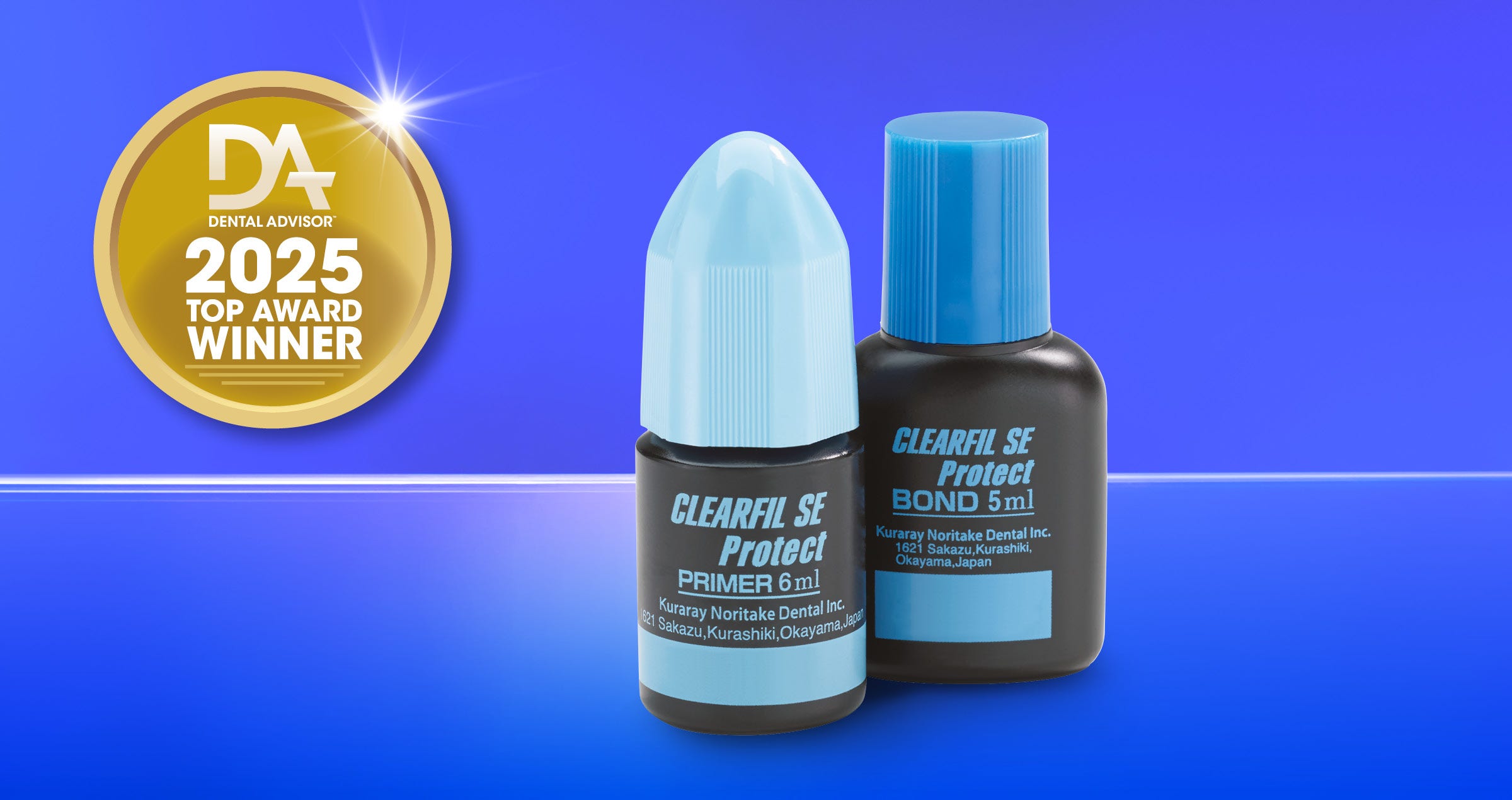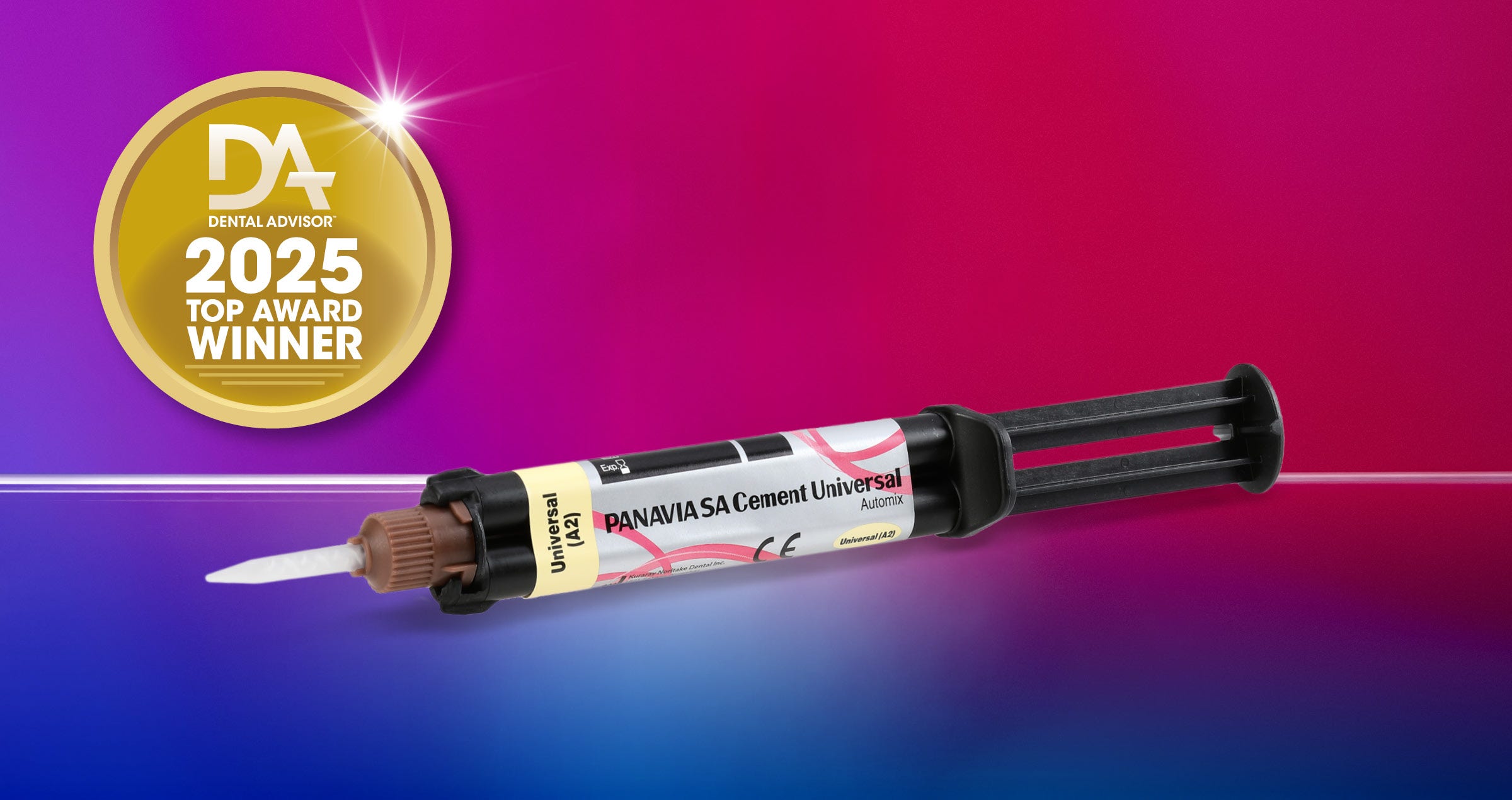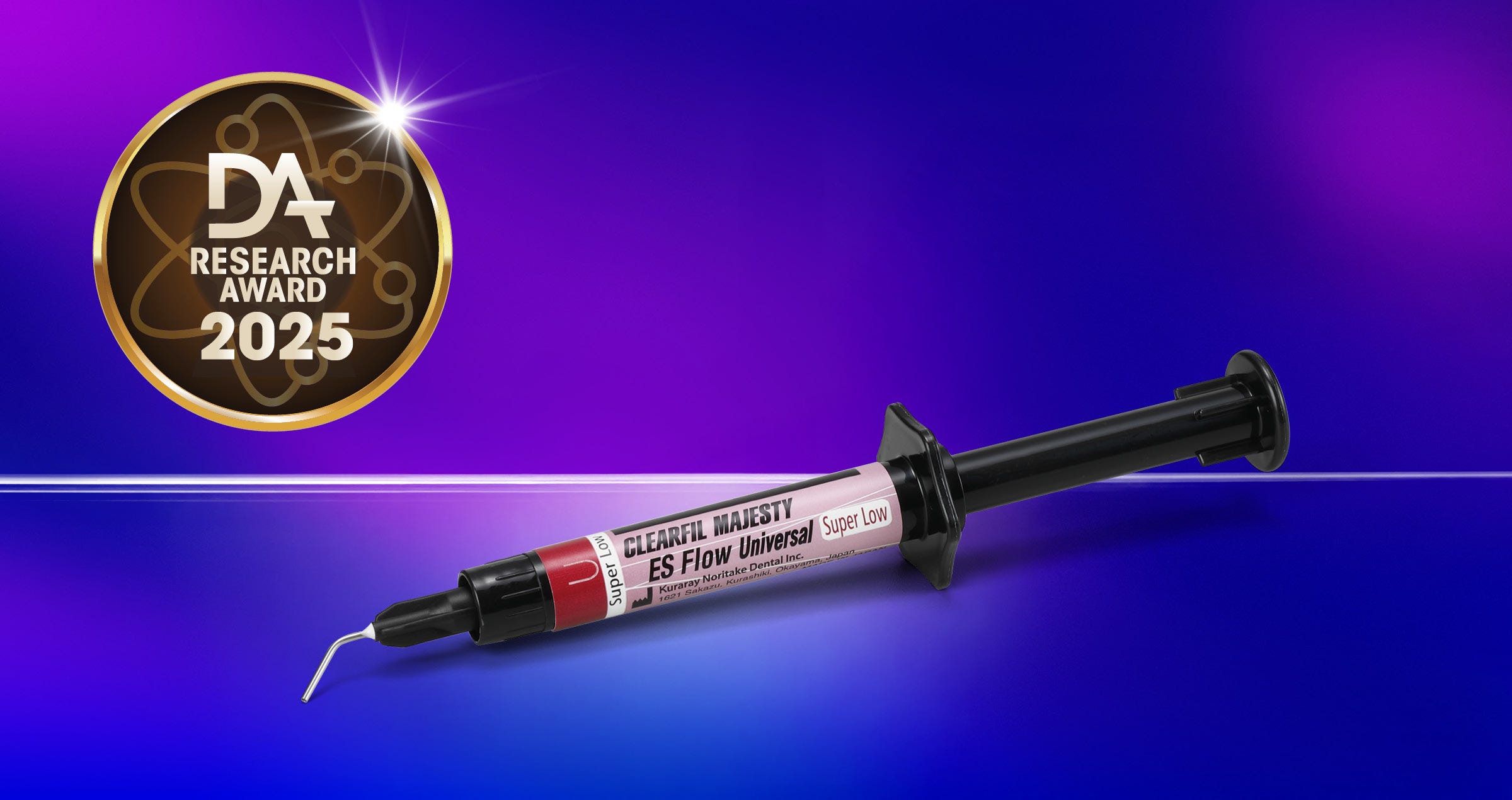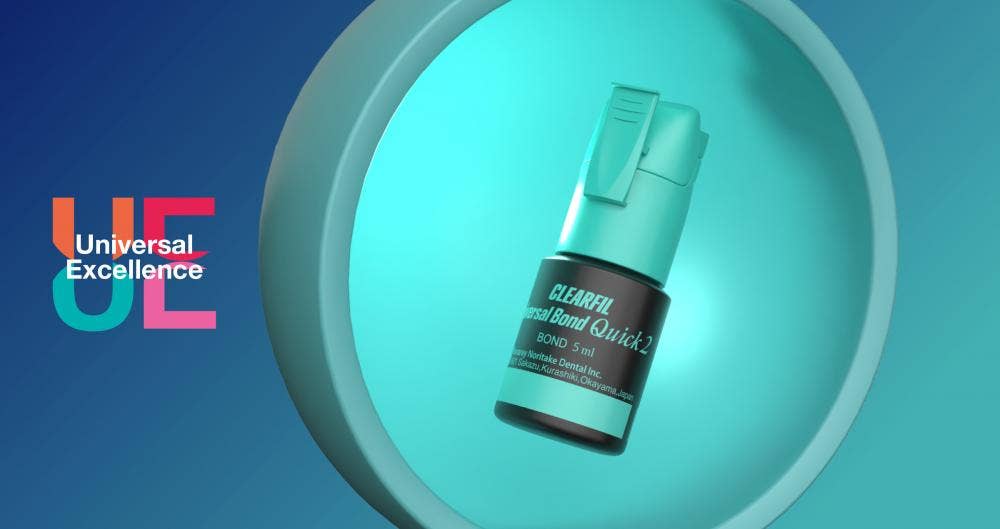Interview with Dr. Enzo Attanasio
TIME-SAVING DIRECT RESTORATION TECHNIQUES FOR EVERY DENTAL PRACTITIONER
Passionate dental practitioner, renowned speaker and inventor of the BEST.FIT technique: Dr. Enzo Attanasio has a lot of valuable insights to share with his audience. At this year’s International Dental Show in Cologne, he lectured on three different topics at Kuraray Noritake Dental Inc’s booth, including “Flow Injection Technique” and “BEST.FIT: A Hybrid Technique for Efficient and Aesthetic Restoration of Anterior Teeth”. We seized the opportunity to talk to him about the most important facts, tips and tricks he presented.
Dr. Attanasio, would you please summarize the key messages of the two lectures just mentioned, starting with “Flow Injection Technique”?
If there is a revolutionary technique that combines the benefits of prosthetic and restorative dentistry, it is certainly the flowable injection technique, also referred to as injection moulding. Nowadays, we have exceptional flowable composites at our disposal, which are absolutely on par with the packable ones in terms of mechanical and optical properties. Unfortunately, however, many dental practitioners are not yet aware of these products. In my lecture titled “Flow Injection Technique”, I wanted to highlight the potential of these materials and the technique. In addition, my aim was to provide a precise recipe that enables the audience to reproduce it in their dental office as early as next week. My presentation covered the whole workflow, from case selection to the production of the wax up and the silicone index, up to the injection of the flowable composite itself.
What about “BEST.FIT: A Hybrid Technique for Efficient and Aesthetic Restoration of Anterior Teeth”?
In the lecture focusing on flowable injection, we explored the limits and strengths of this technique. BEST.FIT is an evolution of this technique that seeks to overcome the limits of both, flowable injection and standard anterior direct restoration techniques. At the same time, it leverages the strengths of those techniques, with the ultimate aim of putting the clinician in a position to face an anterior restoration without major stress.
Let us focus on the flowable injection technique first. When and why do you opt for this technique?
Flowable injection has the same fields of application as other direct and indirect restoration techniques. It is very well suited for young patients desiring veneer treatment, for example. In the era of social media, with images of influencers that underwent aesthetic dental treatment being omnipresent, our children grow up with high aesthetic expectations. When they present in our dental offices and ask for a smile makeover, they are often too young to be treated ceramic veneers. Those with a clear need for aesthetic treatment are ideal candidates for a smile makeover with the flowable injection technique: This technique is micro-invasive, produces restorations that are easily modified or repaired at any time, and allow for treatment with ceramics at a later date. Other target groups include individuals who cannot afford highly expensive treatments with ceramics, but go in for high quality and aesthetics, and those with a severely worn dentition. For the latter group, we can use the technique to produce medium to long-term mock ups that increase the vertical dimension of occlusion. Moreover, direct restorations produced using this technique may be combined with ceramic restorations in this target group to reduce the cost of the therapy. Hence, the technique is versatile and it is very important that a clinician is able to make use of it.
What is the difference between this technique and the BEST.FIT technique you developed?
The flowable injection technique uses a digital or conventional wax-up to produce a transparent silicone index that serves as a shell for the injection of flowable composite. Once injected, the composite is cured through the index. In this way, the desired anatomical shape is obtained with minimal effort. However, the technique allows for single-shade restorations only. The BEST.FIT Technique is a hybrid technique I developed to address this limitation and leverage the advantages of both, flowable injection and classical direct anterior restoration techniques. It involves the creation of the dentin core by hand, followed by the injection of the layer imitating the enamel through a transparent index. This is particularly beneficial in the context of treating young people, where I feel the need to incorporate incisal translucencies into my anterior restorations. An article describing the technique was published in 20241.
When do you prefer this technique over the flowable injection technique?
Every time I need to incorporate different levels of translucency into my restorations, the BEST.FIT technique is my first choice. This is especially important when it is not planned to restore “the social six”, but to treat single teeth in the maxillary anterior region. In this case, I have to replicate the adjacent natural teeth with their natural internal anatomy. Whenever those teeth have a complex internal colour structure, a single-shade technique would not lead to the desired result, because playing with different opacities is essential. This is what the BEST.FIT technique allows me to do in an efficient way.
No matter whether you opt for the flowable injection or the BEST.FIT technique, proper isolation of the working field is an important prerequisite for long-term success. What are your tips in this context?
As shown in one of my lectures, it is possible to use rubber dam in some cases. However, any dental practitioner opting for rubber dam should keep in mind that when placing the dam, there will always be a band of tooth near the gum, which will remain covered by the dam. This is fine as long as we do not have to cover discolouration in the cervical area. In this case, we can ask the dental technician to start waxing up a millimetre away from the gingival margin. Staying supragingivally means that the transparent silicone index may be trimmed in that area as well and the rubber dam will stay in place during its placement. This significantly reduces the risk of contaminating the bonding surface with saliva. Another factor to be considered carefully is the positioning of the clamps. Ideally, the silicone index is shaped in a way that the clamp does not interfere with its insertion. For protection of the adjacent teeth, PTFE tape has proven its worth.
How important is bonding for both techniques and what are the key success factors in this context?
Bonding is a fundamental part of every modern restorative treatment. To provide for optimal bonding conditions in the context of restoring teeth using the flowable injection or BEST.FIT technique, we should always try to use rubber dam. If this is not possible, we need to be very careful to keep the working field dry and clean until the injection is completed. This means that any contamination with blood and saliva must be avoided. Especially during the injection step, this is only feasible when the surrounding soft tissues are perfectly healthy. The selection of a high-quality bonding agent and the following of the recommended protocols are also important factors for the establishing of a strong, long-lasting bond on the clean and dry surface. In my daily practice, I started using a universal adhesive in combination with selective etching of the enamel approximately ten years ago. Ever since the introduction of CLEARFIL™ Universal Bond Quick (Kuraray Noritake Dental Inc.), this product is my universal adhesive of choice for direct and indirect restoration procedures. When I graduated 20 years ago, I started with classical three-step adhesive systems used in the etch-&-rinse technique. I would never go back, as CLEARFIL™ Universal Bond Quick provides reliable bonding with virtually no postoperative sensitivity.
Fig. 1: Prepared teeth and isolated working field prior to treatment using the BEST.FIT technique.
Fig. 2: Palatal silicone index produced over the wax-up model with silicone putty material to allow for the build-up of the palatal wall and the layering of the dentin core by hand.
Fig. 3: Transparent silicone key for the injection step, produced over the wax-up model using an impression tray. The injection holes are ideally integrated with the cannula of the flowable composite syringe starting inside the index.
What about silicone index preparation for the flowable injection and BEST.FIT technique?
Usually, a silicone index used for mock-up creation in the patient’s mouth is made of vinyl polysiloxane putty material that is modelled by hand. Transparent silicone materials used to produce a silicone index for the flowable injection and BEST.FIT technique have a lower viscosity. Hence, an impression tray is needed to record the details of the wax-up. In this context, it is important to select a tray of the right size, fill it well with silicone material and place it carefully over the wax-up. After all, we need a high accuracy and dimensional trueness of the silicone index as well as a sufficient wall thickness that gives it the required rigidity and avoids distortions during injection moulding.
What composite materials do you combine when using the BEST.FIT technique and use for flowable injection?
When modelling the dentinal structures by hand, you may use your favourite packable composite. After all, the procedure is the same as any classical anterior restoration procedure. All the materials I usually use for the classical steps of direct anterior restoration production are perfectly suitable for all steps prior to the build-up of the vestibular layer. When employing the BEST.FIT technique, it is essential to leave 0.5 mm of space buccally for the subsequent injection step. When opting for the flowable injection technique, the injection will follow immediately after application of the adhesive. In both cases, it is possible to inject any kind of flowable composite. These materials are typically transparent enough to reveal all the details of the dentin core found underneath – like the incisal effects created with the BEST.FIT technique.
Let us focus on the BEST.FIT technique. Do you have any recommendations regarding the modelling of the dentin core?
If you have to copy a contralateral tooth, use a polarized filter on your camera to eliminate all the reflections on the enamel. This will allow you to see through the enamel and analyse the anatomical form of the natural dentin structure. If you cannot copy and are inventing an internal colour structure, my advice is to consider the age of the patient you are treating. Distinct mamelons are characteristic of younger patients. Every age has its anatomical internal characteristics that must be followed to obtain lifelike results in the end.
Fig. 4: Distinct mamelons created by hand to restore the smile of a young patient.
How do you make sure that the space available is ideal for the buccal enamel layer?
It is fundamental to always use a silicone key that is cut vertically to measure the space left buccally or the enamel layer. This layer must not be too thick or too thin – as I mentioned, 0.5 mm seem to be ideal. Too much enamel placed buccally over the dentin framework will make the entire restoration appear low in value. It will look grey and not blend well with the surrounding tooth structure. On the other hand, an enamel surface that is too thin will too strongly expose the opaque colour of the dentin, resulting in the opposite effect.
How to avoid air bubbles during injection?
First of all, it is very important to choose a flowable composite well filled into the syringe during the industrial process. CLEARFIL MAJESTY™ ES Flow (Super Low and Low, Kuraray Noritake Dental Inc.) are completely free of bubbles inside the syringe. In addition, the injection technique is really important. It is essential to bring the needle tip to the cervical margin. Positioned there, we can start injecting the composite. When the tip is completely surrounded by composite, we can start to move the syringe slowly back towards the incisal area and the insertion hole without releasing the pressure on the plunger, making sure that the tip always remains immersed in the flowable composite. It is very important to keep a controlled and constant pressure to have a good result.
What are your recommendations for successful finishing of restorations created using the flowable injection or BEST.FIT technique?
As with every composite restoration, it is very important to finish and polish the surface thoroughly as the long-term performance of our restoration is strictly linked to the final surface quality. Ideally, the final photopolymerization is performed under a layer of glycerin gel. With regards to the following finishing steps, there is one substantial difference between the described techniques and free-hand layering: Both moulding techniques allow us to reproduce the surface texture created by the dental technician on the wax-up in a very precise way. With a high-quality index and correct injection, it is possible to skip the surface texturing step during finishing completely. We just have to remove the peripheral excess and polish with rubbers, discs and filters. Fortunately, flowable composites like CLEARFIL MAJESTY™ ES Flow are very easy to polish, while their gloss retention is great.
Fig. 5: High-gloss surfaces of restorations created with CLEARFIL MAJESTY™ ES Flow.
How do the described restorative techniques fit into your daily procedures?
Every time I need to restore or modify the aesthetic appearance of my patients’ teeth, I start with the defining of a target. If the desired outcome is achievable with composite instead of ceramics, and whenever a micro-invasive approach is needed, I opt for one of the two techniques. They are good enough to solve a lot of restorative cases in a great way; and they allow me to save a lot of chair time. Consider that all finishing steps dedicated to the texture of an anterior restoration is no longer necessary. A concrete example: I would expect a treatment involving free-hand modelling of restorations from canine to canine to take three to four hours, while the flowable injection technique might enable me to accomplish the task within one and a half hours!
Is it difficult to implement those techniques in a general dental practice?
Absolutely not! The learning curve for those techniques is quite short. Of course, it is essential to understand the materials and follow the correct protocols to apply them effectively. However, when compared to techniques like the direct layering of composite veneers, these approaches are significantly simpler and better accessible to every clinician. It all starts with a correct diagnosis, and a good project together with the technician, whose work is as important as the clinician’s for the success of the project. The wax-up and the silicone index are fundamental. My suggestion is also to learn the fundamentals of digital smile design when starting to use the flowable injection and BEST.FIT techniques. Digital smile design allows for streamlined communication between practice and laboratory, but also with the patient.
What is your final remark?
Knowledge, protocols, and materials are the keys to perfect results. If even one is missing, failure is just around the corner.
Reference
1. Attanasio E. BEST.FIT: A hybrid technique for efficient and aesthetic restoration of anterior teeth. Cosmetic Dentistry 2024:1, 38 – 41.
Dentist:
DR. ENZO ATTANASIO
Enzo Attanasio graduated in 2008 with a degree in Dentistry and Dental Prosthetics from the Magna Graecia University of Catanzaro. In 2009, he specialized in the use of lasers and new technologies in the treatment of oral and perioral tissues at the University of Florence. That same year, he also attended Prof. Arnaldo Castellucci’s course in Clinical Endodontics at the Teaching Center of Microendodontics in Florence, where he later completed his training in Surgical Microendodontics in 2012. In 2017, he took a course on direct and indirect adhesive restorations at Prof. Riccardo Becciani’s Think Adhesive training center in Florence, where he later became a tutor. Today, Dr. Attanasio, a member of the Italian AIC and based in Lamezia Terme, Italy, has a special interest in Endodontics and Aesthetic Conservative Dentistry.


